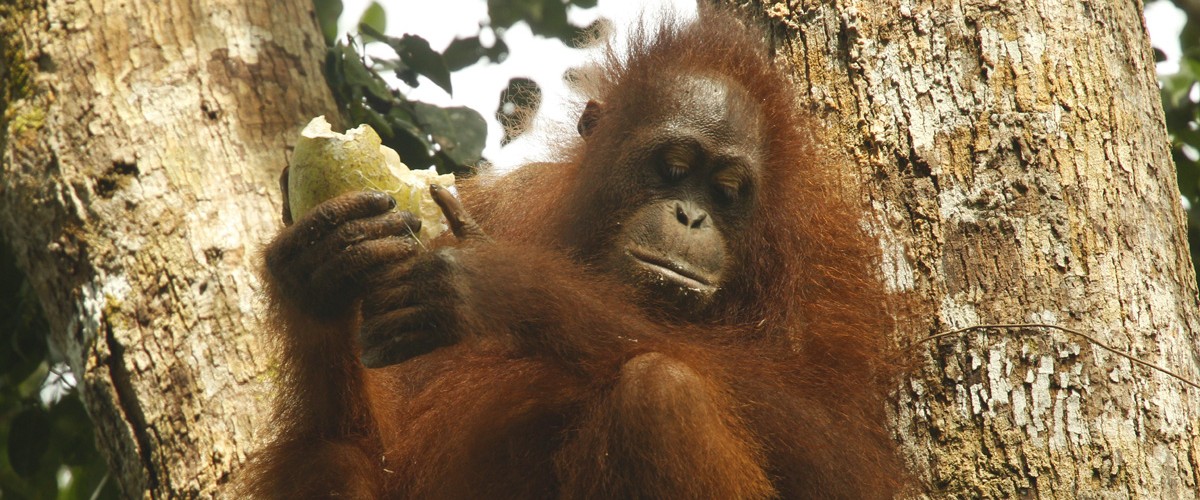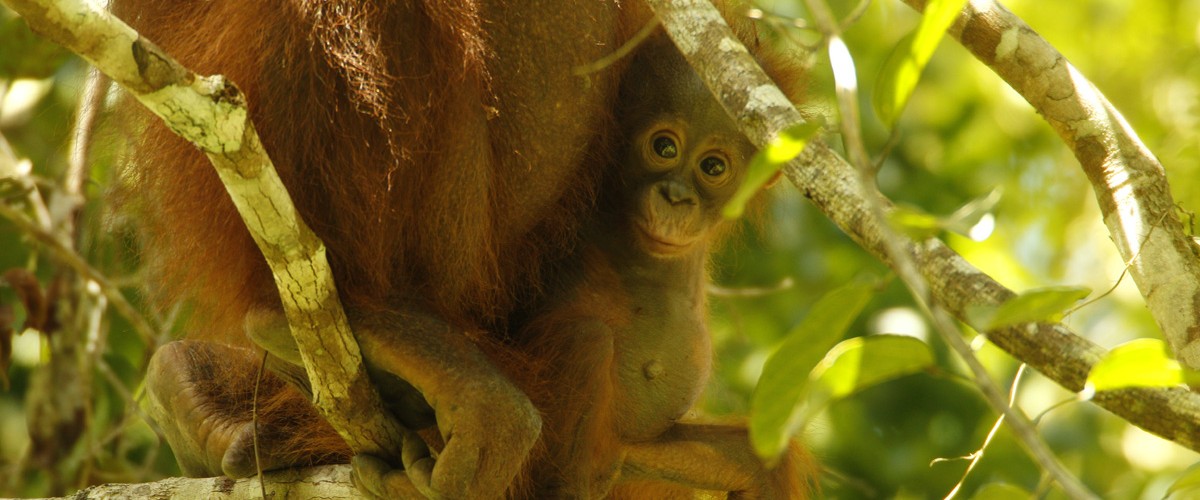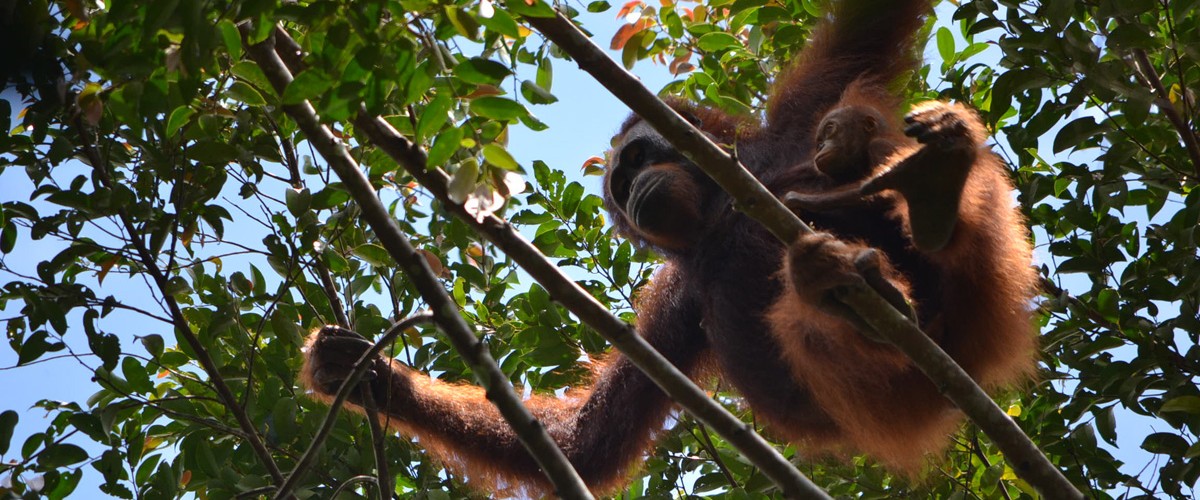By Natalie Robinson, Research Assistant
During the past year, as a Research Assistant at Cabang Panti, I took a particular interest in orangutan health, as knowledge of this critically endangered species’ health and disease status can help us to further understand their long-term viability. An important tool in the assessment of wild orangutan health is the detection of parasites in their feces. Parasite infection places stress on orangutans’ bodies, which can affect a wide range of biological functions. The analysis of non-invasively collected fecal samples provides a useful proxy for population health.
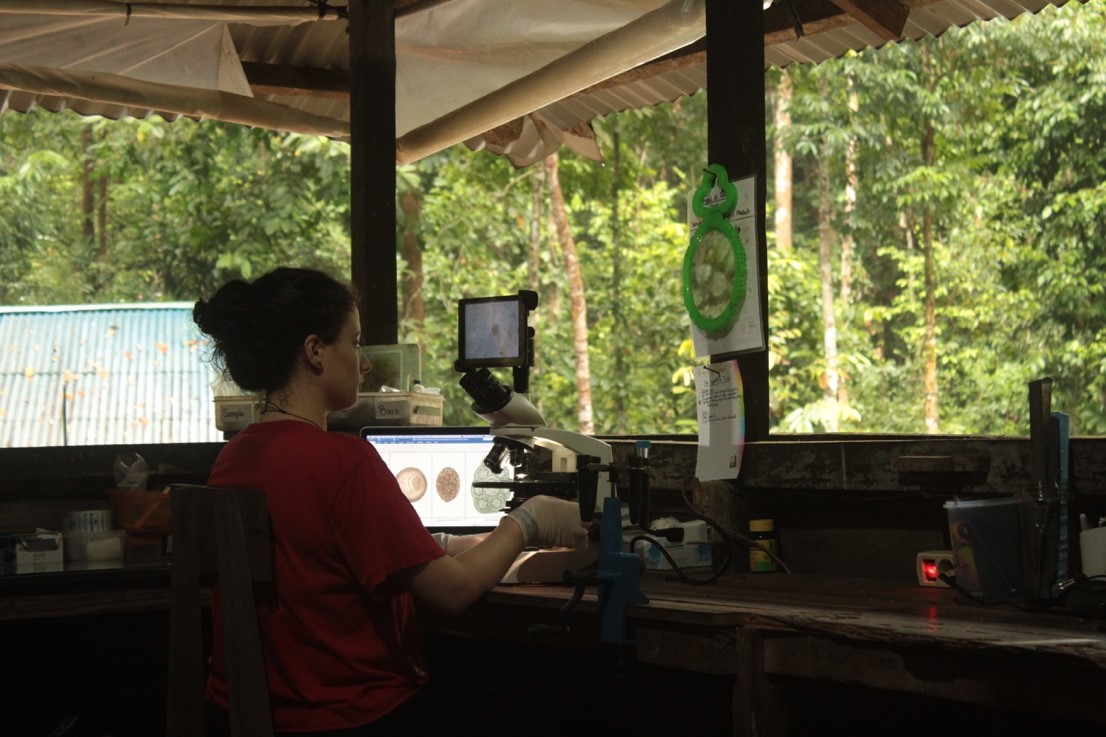
Intestinal parasites can be transmitted through the oral-fecal route, or through direct contact with contaminated soil or surfaces. Likely due to their solitary lifestyle, orangutans have low white blood cell counts (compared to the African apes), which is indicative of a less active immune system. Lower baseline white blood cell levels may result in a compromised ability to combat disease. Orangutans’ solitary lifestyle, coupled with a decreased immune response, leads to the expectation that social behavior and health status would have an influence on parasite infection risk and patterns.
One parasitology study, by Dr. Caitlin O’Connell, had been done at Gunung Palung prior. A goal of this study was to establish a baseline understanding of orangutan parasite infection so that patterns could be monitored over time. Different age-sex classes of orangutans display different levels of sociality, so it was hypothesized that they would also have differing parasite loads. However, it was found there was no significant difference in parasite prevalence among the age-sex classes, or generally between males and females. An association between parasite infection and sociality was not found. There was 100% overall parasite prevalence in the population, as each fecal sample examined contained at least one species of parasite.
Since Dr. O’Connell’s initial study we have continued to monitor parasites in the orangutans we study. This year I conducted a study which continued this parasite assessment over a longer time period.
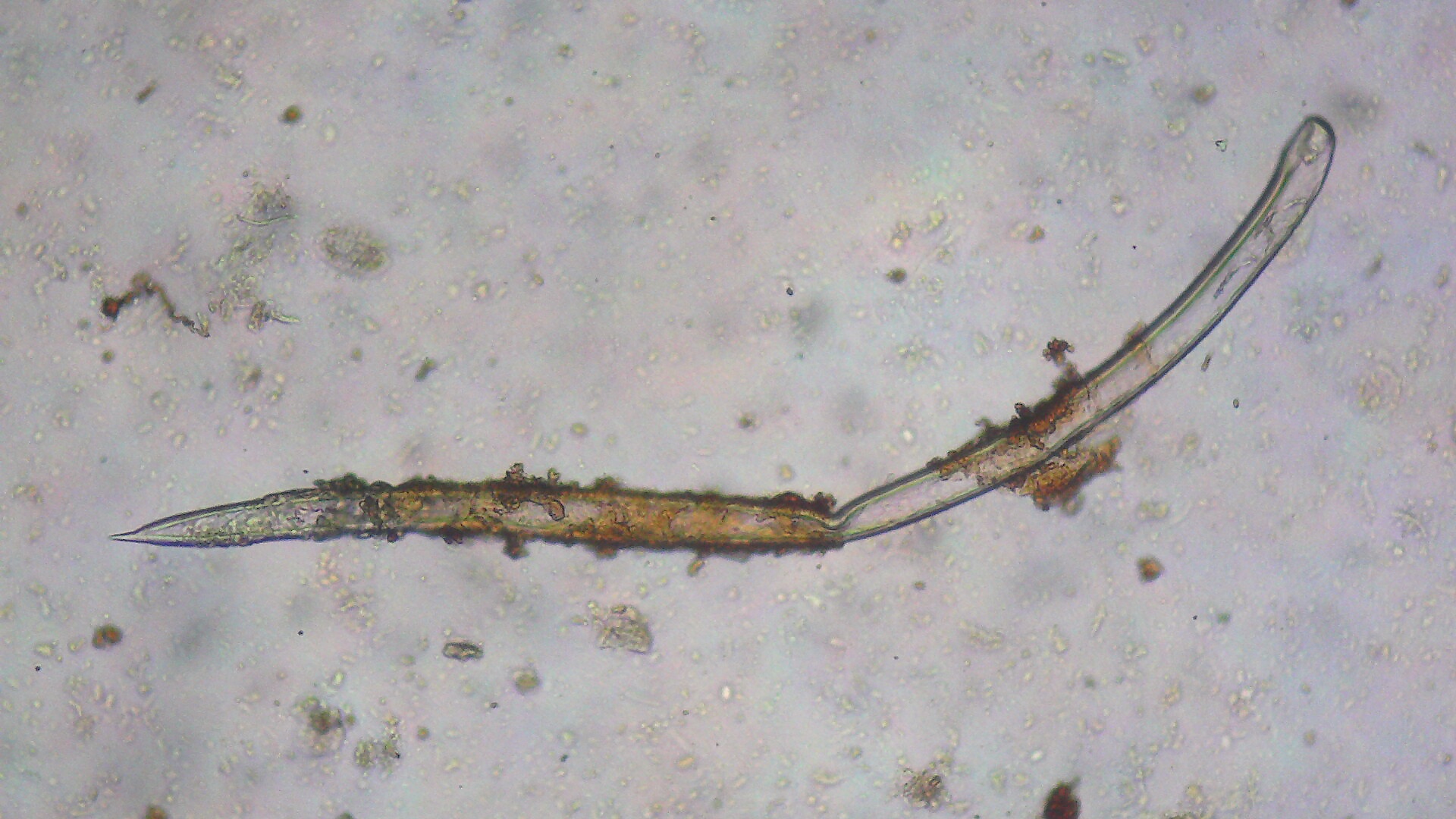
Same-day analyses were done on fresh fecal samples on-site. Samples were collected opportunistically during focal follows of orangutans encountered within the Cabang Panti vicinity. I processed samples using two different methods: the Direct Smear technique and Single Centrifuge Flotation technique. Each method ultimately allowed for the transfer of parasites from fecal matter onto a microscope slide, so that I could then observe samples under a microscope and identify parasites based on morphological characteristics.
Using data I collected, in collaboration with data from former Indonesian counterpart student Ishma Fatiha Karimah, I was able to further examine orangutan parasite infection patterns. Samples were collected from 14 unique individuals – three flanged males, four unflanged males, six adult females, and one adolescent female. Forty nine samples were collected and each sample was analyzed with both methods. Each individual was sampled between one and 14 times. The following parasite types were observed: Balantidium sp., Entamoeba sp., Enterobius sp., Trichuris sp., and Ascaris sp. Additionally, Strongyle-type parasites, larvae, and unknown varieties were observed.
In our continued sampled we also found a 100% overall parasite prevalence, meaning that during each sample analysis at least one parasite was observed. Larvae were present among all individuals and unknown species were present in all but one sample. The least-common parasite type was Enterobius sp., which only two female individuals tested positive for.
The figure below shows the prevalence of each parasite type by sex. The green bars represent the percent of females infected, while the blue bars are the percent of males infected. Looking across each parasite type, it appears that the prevalence among females was always higher, with the exception of larva, in which males and females both had 100% prevalence. Interestingly, no males tested positive for Enterobius sp.

A nonparametric Independent-Samples Mann-Whitney U Test found that the distribution of Balantidium sp. and Trichuris sp. were not even. For both Balantidium sp. and Trichuris sp. the prevalence among females was significantly higher. (This test was done using the weighted means for each analysis because although there were an equal number of females (N=7) and males (N=7) tested, the number of total analyses for males and females was not equal.)
These results were unexpected, because during the last study (O’Connell 2018) it was found that there was no significant difference between the sexes. It has also been hypothesized that males (both flanged and unflanged) may have higher infection rates due to their differences in behavior, including home range sizes, sociality, and frequency in which they come in contact with the ground. Here, this was not the case. I think this further highlights how little we understand orangutan health and immune function, and emphasizes the need for continued research.
This study was limited by the nature of opportunistic sample collection. I had no samples from infants, juveniles, or adolescent males, and the number of samples per individual was not consistent. This underscores the importance of continuing assessment as part of a longitudinal study. Additionally, trends of infection may vary over time. It is also important to continue to build up our sample size in order to control for the large number of variables. Here, I compared males and females, though other important factors may include: flange status, the habitat type an individual lives in, number of offspring, food availability and energetic intake.
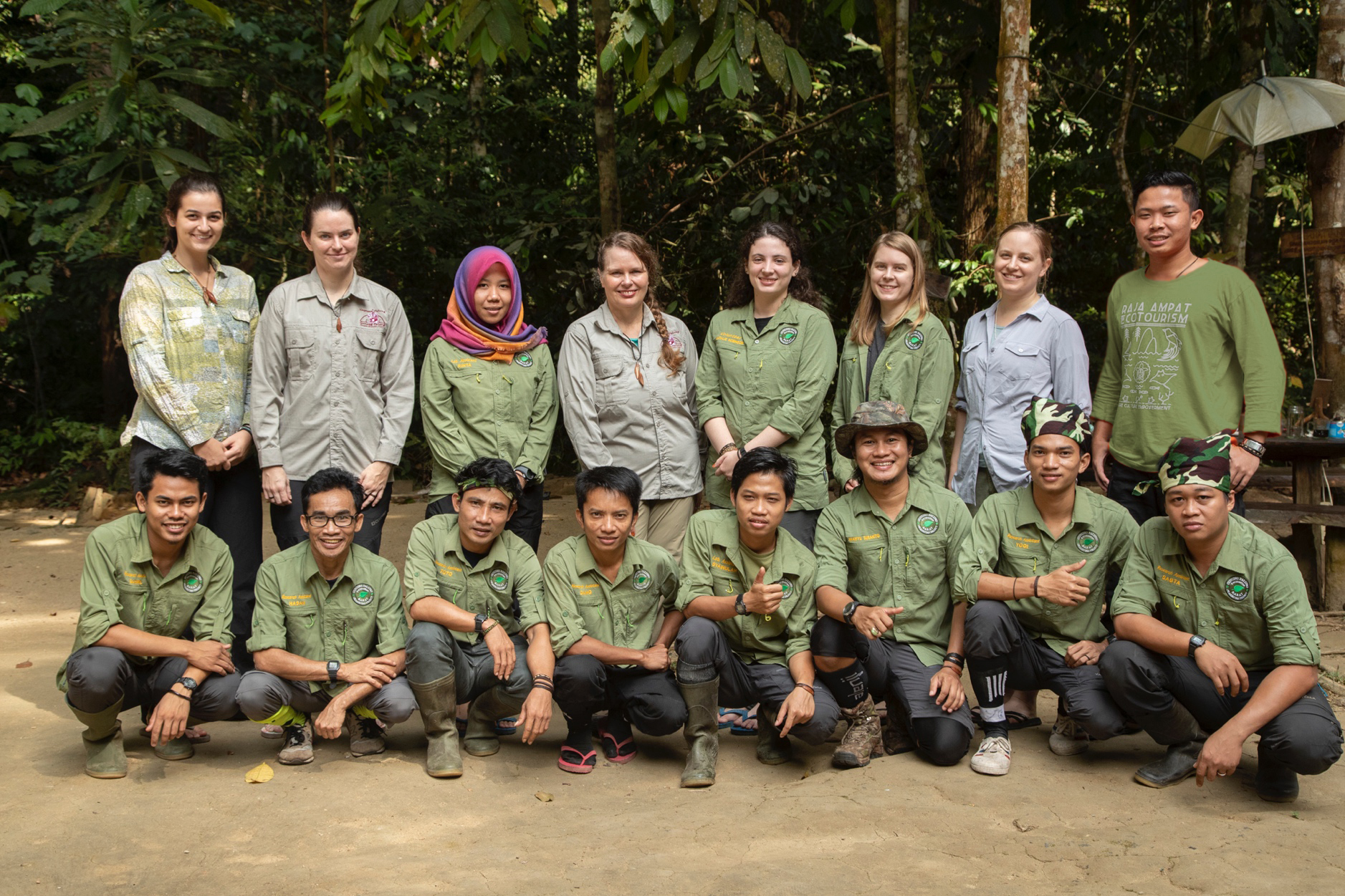
My time in the forest has now come to a bittersweet end, though I am excited to share the results of my project with all of the GPOCP supporters. I am so grateful for all of my friends at Cabang Panti and GPOCP who have shaped my amazing experience in Indonesia. It would not have been possible without help, encouragement, and hard work from all of the GPOCP field assistants, staff and researchers.
